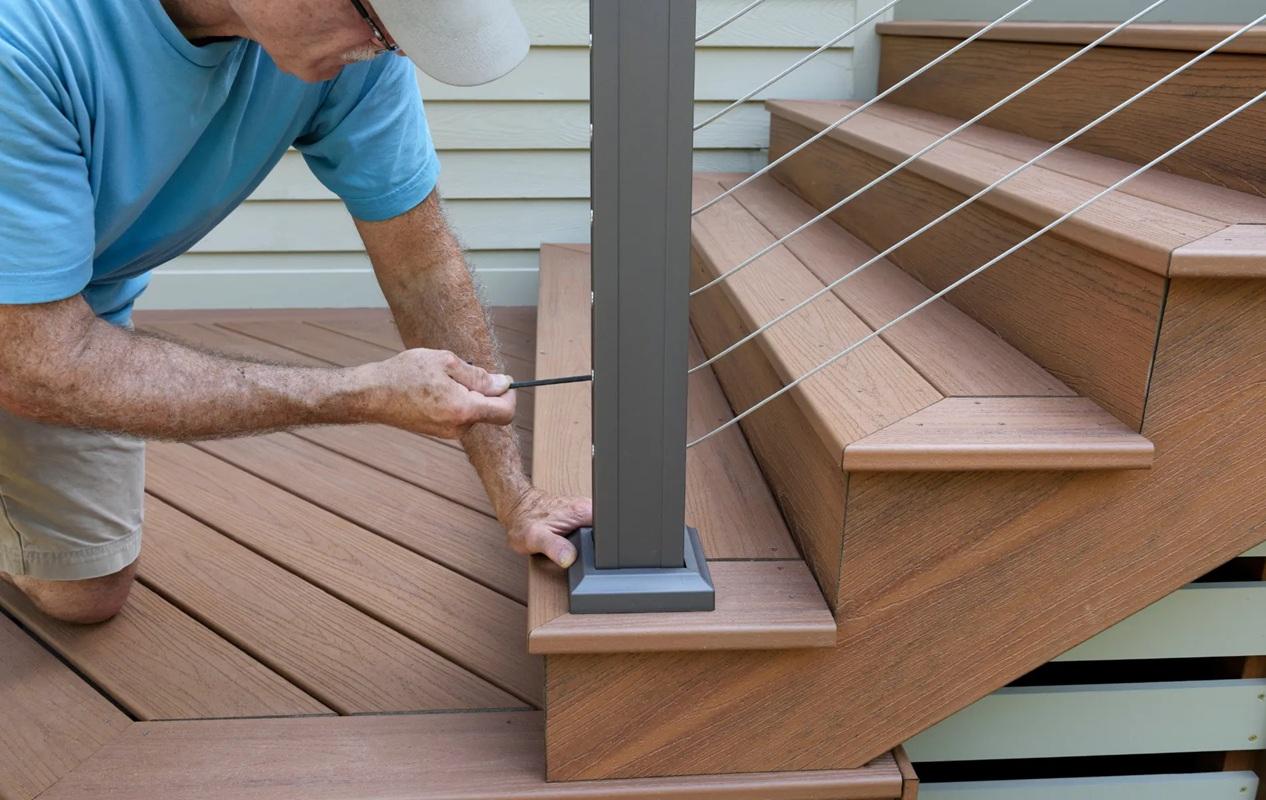7 Railing Repair Tips for Homeowners

Railings are a key feature in any home, both for safety and appearance. Whether they’re on staircases, balconies, or garden boundaries, strong and well-maintained railings help prevent falls and keep your property looking its best.
Over time, weather, wear, and general use can cause your railings to weaken or break. Spotting issues early and making timely repairs can save you from bigger problems down the line. With the right approach, even small fixes can go a long way.
If you're in Bournemouth, regular checks and timely railing repairs can help prevent costly replacements later. Use these tips to keep your home’s railings in top condition all year round.
1. Check for Wobbling and Movement
The first sign that a railing might need repair is any movement when pressure is applied. If your railing shakes, shifts, or wobbles when touched, it’s likely that a fastening point has come loose or the base has weakened.
Don’t ignore this. A wobbly railing can fail under weight, especially on staircases or elevated platforms. Tighten any visible screws or bolts, but if the issue persists, it may require professional attention to reinforce the anchoring points.
2. Address Rust Early on Metal Railings
Metal railings, especially iron or steel, can rust when exposed to rain and humidity. Rust isn’t just cosmetic. Over time, it eats into the metal and compromises the structural integrity of the railing.
If you notice small patches of rust, use a wire brush to remove it, then apply a rust-inhibiting primer and weatherproof paint. Make sure to repaint periodically to prevent moisture from reaching the surface again. For widespread rust, replacement of sections may be needed.
3. Inspect Wooden Railings for Rot and Cracks
Wooden railings bring warmth and charm, but they require more maintenance than metal. Moisture, pests, and temperature changes can lead to rot or splitting.
Regularly inspect your railings for:
-
Soft spots
-
Splinters or cracks
-
Signs of insect activity
If rot is limited to a small section, you may be able to cut and replace the damaged area. However, deeper damage may call for full replacement of the railing post or baluster.
4. Tighten or Replace Loose Fixings
Over time, the screws, bolts, and brackets that hold railings together can come loose. This is especially common on outdoor railings affected by seasonal expansion and contraction.
Periodically go over all visible fixings with a screwdriver or wrench. Replace any corroded screws with new stainless steel ones, which resist rust. Always make sure fasteners are properly aligned to avoid stressing the material around them.
5. Repaint and Seal for Protection
Regular painting or sealing doesn’t just improve the appearance of your railings, it also protects them from the elements.
For metal, use outdoor-rated paint that offers corrosion protection. For wood, apply a sealant or stain that helps repel moisture and UV rays. Refinish your railings every couple of years, or sooner if the surface starts peeling or fading.
Proper sealing extends the life of your railings and keeps repairs to a minimum.
6. Maintain Safe Handrails Indoors
Indoor handrails are just as important as outdoor ones. They’re used daily and are essential for safe movement on stairs. If they become loose or detached from the wall, they pose a real hazard.
Check for:
-
Movement when pulled or pushed
-
Separation from the wall brackets
-
Loose spindles or end caps
Secure all hardware and replace worn brackets. For timber rails, sand any rough spots and reapply finish if needed. A secure handrail is a basic, but essential safety feature.
7. Know When to Call a Professional
While many small fixes are manageable, certain repairs require expert tools and knowledge. If your railing is severely rusted, cracked, or loose at the foundation, it’s best to call in a professional.
Specialists can:
-
Assess structural safety
-
Weld or replace metal components
-
Match historical or custom designs
-
Ensure compliance with building codes
Getting professional help ensures your repairs are done safely and to a high standard, especially if the railing is load-bearing or decorative.
Bonus Tip: Regular Inspections Save Money
Don’t wait for obvious damage before checking your railings. Add them to your seasonal maintenance checklist. A quick inspection every few months can help you spot problems early, when they’re easier and cheaper to fix.
Look for:
-
Movement at joints or posts
-
Surface wear or peeling paint
-
Rot or insect signs on wood
-
Corrosion, dents, or rust on metal
Staying ahead of small problems helps extend the life of your railings and keeps your home looking cared-for.
Final Thoughts
Your railings work hard every day to keep you safe, but they need a little help from you to stay strong. With regular checks, timely repairs, and good maintenance, you can keep them secure and attractive for years to come.
- Information Technology
- Office Equipment and Supplies
- Cars and Trucks
- Persons
- Books and Authors
- Tutorials
- Art
- Causes
- Crafts
- Dance
- Drinks
- Film
- Fitness
- Food
- Games
- Gardening
- Health
- Home
- Literature
- Music
- Networking
- Other
- Party
- Religion
- Shopping
- Sports
- Theater
- Wellness



